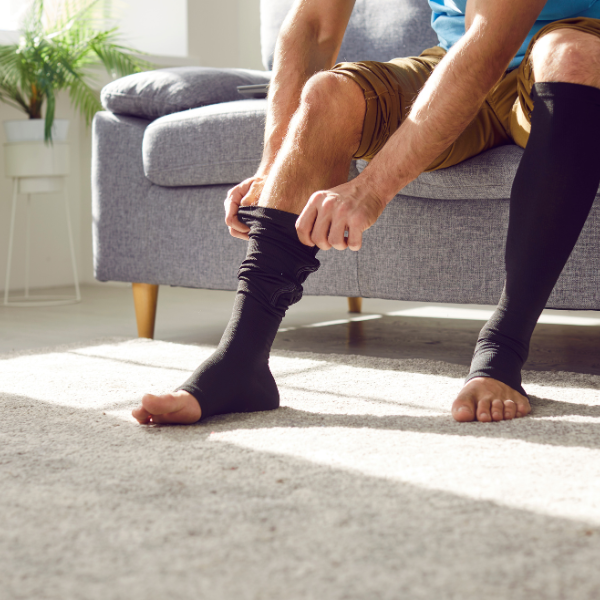Common Mistakes People Make When Wearing Compression Stockings
Recent Post
- How Foot Mobilization Therapy Can Improve Your Mobility
- Cervical Neck Pillows for Migraine Relief — Fact or Myth?
- The Link Between Foot Health and Overall Well-Being
- Common Mistakes People Make When Wearing Compression Stockings
- Laser Therapy for Seniors in Brampton: A Non-Invasive Option for Pain Relief
 Compression stockings have been proven to improve circulation, reduce swelling, and prevent issues like varicose veins and deep vein thrombosis (DVT). The problem comes when they are not able to work properly or worse, make us feel uncomfortable. We see several patients at WestBram Physiotherapy & Wellness who are making these mistakes and, as a result, not getting the full benefits. We will examine the most common ones and how to prevent them.
Compression stockings have been proven to improve circulation, reduce swelling, and prevent issues like varicose veins and deep vein thrombosis (DVT). The problem comes when they are not able to work properly or worse, make us feel uncomfortable. We see several patients at WestBram Physiotherapy & Wellness who are making these mistakes and, as a result, not getting the full benefits. We will examine the most common ones and how to prevent them.
1. Choosing the Wrong Size
Wearing too loose stockings is one of the most common mistakes. Stockings that are inappropriate, shredded, or do not provide the necessary compression or cause skin irritation
Pro Tip: Make sure to measure your legs as instructed, typically first thing in the morning before swelling starts, and according to the manufacturer’s sizing charts.
2. Wearing Them Only When You Feel Discomfort
It should be used before the warning signs appear, not simply as a reactive treatment. Function lessens by the time your feet are puffy and calloused.
Tip: Wear them consistently, especially during activities known to cause pain — so include them (for a time at least) when you are on your feet all day or when travelling.
3. Putting Them On Incorrectly
Rolling stockings before wear can cause pressure points to be placed on the legs, and if not uniform, a court will suffer circulation problems.
Tip: Use the “Inside Out” method. Turn the stocking inside out on your arm until you get to the heel. Then, put your foot through it and lightly push it up on your calf.
4. Ignoring Compression Levels
Compression stockings are not equally manufactured. Wearing too low a level may not provide the help you need, while wearing too high can become uncomfortable or harmful.
Tip: Consult your physiotherapist or healthcare provider to know the right compression level for you.
5. Not Wearing Them for the Recommended Duration
Unfortunately, some people pull their stockings off after a few hours, thinking that they have helped themselves, which is quite wrong. But the benefits come from using them as they are intended for the appropriate amount of time each day.
Tip: Continue to wear them during the day and take them off before going to bed according to your physiotherapist’s advice.
6. Neglecting Care and Replacement
Unfortunately, the elasticity within compression stockings naturally dissipates over time — rendering them less effective. They tend to sag and bunch up as they age.
Tip: Clean them gently and replace every 3–6 months, or as the manufacturer suggests.
Final Thoughts
Compression socks work wonders for the health of your legs—as long as you use them correctly. By avoiding these common errors, you can get the most out of them and support your legs’ health and comfort. At WestBram Physiotherapy & Wellness, we can help you choose the best compression stockings, teach you how to use them properly, and improve your circulation and comfort.
